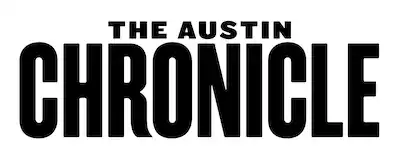https://www.austinchronicle.com/news/2006-11-24/422678/
Supremes Weigh In on 'Partial-Birth' Abortion
By Jordan Smith, November 24, 2006, News
The U.S. Supreme Court on Nov. 8 heard oral arguments in two cases that ask whether the 2003 federal law banning so-called "partial-birth" abortion should be allowed to stand, even though it lacks any exception to protect the life of the mother. According to the government – which appealed to the Supremes after a series of six federal appellate courts ruled that the law is unconstitutional – the purpose of the ban is twofold. First, Congress wants to ban a procedure that it says is "never medically necessary," and, second, the ban is needed to define a "bright line" between legal abortion and "infanticide" – indeed, the ban's true ideological core.
Still, on its face at least, the issue before the court is not whether abortion itself is murder – both the government and the women's reproductive rights advocates involved in these cases agree the fetuses in question are "previable," meaning they will not survive outside the womb. Rather, the question before the court is whether a certain kind of abortion procedure, commonly known either as an intact dilation and evacuation or dilation and extraction, during which a doctor dilates the cervix and partially extracts the body of a living fetus before crushing its skull, is an appropriate medical practice or merely a gruesome cruelty. The procedure is rare – reportedly, there are at most several thousand performed each year out of more than a million live births – and the government, through Solicitor General Paul Clement, argued before the court last week that it's completely unnecessary because a doctor can always perform a regular D&E where "fetal demise" happens in utero – usually by injecting drugs into the heart – before it is disarticulated and removed. But reproductive health care advocates – represented by Planned Parenthood and Nebraska doctor Leroy Carhart in these two appeals – argue that there are cases where an intact D&E is medically necessary – especially in cases where the mother's life would be seriously threatened – with risk of serious infection, uterine perforation, or spread of cancerous tissue, among other circumstances – by the repeated insertion of medical instrumentation necessary in the standard dismembered-fetus D&E.
The Supremes shot down a similar Nebraska state law in 2000 precisely because it failed to contemplate a health exception where an intact D&E might be necessary. Last week, however, Clement told the Supremes that Congress' determination, after six committee hearings on the subject, undertaken before writing the 2003 ban, led lawmakers to conclude that the intact D&E isn't necessary and is, in short, "too close to infanticide to be tolerated." Besides, he argued, the intact extraction could be avoided by making every woman first submit to the preprocedure lethal injection; if a fetus were removed alive, even if it were previable, he said, it would still be murder if, for example, "in the hours that it might have to live … somebody came in and ripped its head open." Justices John Paul Stevens and Ruth Bader Ginsburg – most notably – were unimpressed by Clements' weaving of abortion politics into his argument: "That's not what this case is about," Ginsberg responded. "We're not talking about whether any fetus will be preserved by this legislation. The only question that you are raising is whether Congress can ban a certain method of performing an abortion. So, anything about infanticide, babies, all that, is just beside the point."
Indeed, Justice Stephen Breyer wanted to know why the court would allow this law to stand when it rejected the Nebraska law – in essence, he asked, why not just insert a medical necessity exception. "With respect, Justice Breyer," Clement replied, the problem is that none of the doctors who say there are instances where the intact extraction can be necessary have offered "cause-specific reasons" for using the intact extraction – in short, Clements said, doctors performing intact extractions do so only out of "preference."
That contention didn't sit well with Priscilla Smith, attorney for Carhart: "I think the image many people have of 'partial-birth abortion' [is] that this is something that's done gratuitously," she told the court, and "not as an integral part of making this procedure the safest for the woman" to avoid "serious complications that, though rare, when they occur … are catastrophic and life-changing and disastrous."
The court is expected to rule in the spring.
Copyright © 2025 Austin Chronicle Corporation. All rights reserved.
